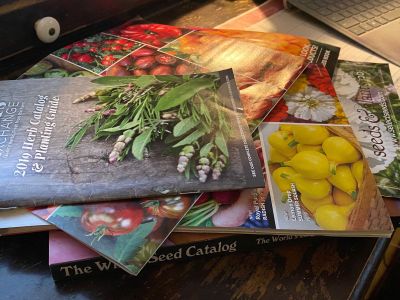Tips for Ordering Plants
First, you have to decide what is important to you as a gardener. Ask questions.
Do you only want organic selections? Do you want seeds that are part of the national seedbank? Do you want a company that gives back to community and global concerns? Is price your main concern?
Many questions go into the decision regarding what company to use as your seed and plant catalog connection. References from publications you trust, veteran gardeners, and even the local master gardener’s organization can clear up which companies are reputable and which are “seedy.”
Understanding a Seed Catalog
Now that you know which nurseries and seed suppliers you want to work with, you must decide on the types and varieties of plants you require. A primary concern is the United States Department of Agriculture zone in which you garden. This knowledge ensures that you choose plants that will thrive in your climate and that are hardy. Hardy refers to the maximum cold temperature the plant can withstand. Next, you should see which varieties of plants do best in your zone. Just because a tomato is hardy in your zone if planted at the right time of year doesn’t mean it will produce well. There are cultivars that are designed for wetter areas, drought prone zones, or difficult soils. Know your basic horticultural terms such as annuals, which only survive one season; perennials, which return each year, and cultivation terms like disease resistant. Your garden’s soil, local moisture, amount of sun and a variety of characteristics should influence your seed and plant choices. Using mail-order catalogs lacks the personal touch and advice of a local nursery, so do your research before completing your order.
How to Decipher Plant Catalogs
Understanding a seed catalog may seem like reading an ancient Greek tablet to the novice gardener. Use your local extension service for help with unfamiliar terms and ask veteran gardeners for help. Some basic tips for ordering plants include:
Check invasiveness – the plant’s status on local pest plant lists. Check laws regarding shipping across your state’s borders. Look for the mature size of the plant – including potential root damage and depth, messiness and maintenance. Take note of zones and climatic requirements. Research new cultivars that are unfamiliar to you.
Many catalogs claim to have a new cultivar that produces a unique color or form, but often they do not produce these traits in every zone. Read the shipping information carefully. If the plant comes bareroot, make sure you order it in winter for early installation. Check the size of the pot the plant is in. There is nothing more annoying than spending a fortune on some wish-list plants plus shipping, only to find they are plugs or starts with barely any roots or chance of survival. Gardening is supposed to be fun, but protect yourself from expensive mistakes by checking the facts and doing a little research, then enjoy the ordering process and your new plants or seeds when they arrive by mail.
